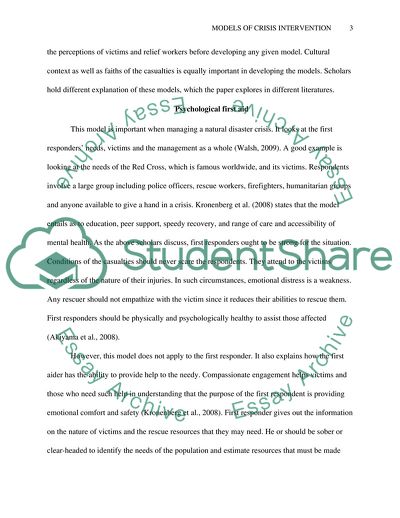Cite this document
(Models of Crisis Intervention Research Proposal Example | Topics and Well Written Essays - 1250 words - 1, n.d.)
Models of Crisis Intervention Research Proposal Example | Topics and Well Written Essays - 1250 words - 1. https://studentshare.org/psychology/1802530-models-of-crisis-intervention
Models of Crisis Intervention Research Proposal Example | Topics and Well Written Essays - 1250 words - 1. https://studentshare.org/psychology/1802530-models-of-crisis-intervention
(Models of Crisis Intervention Research Proposal Example | Topics and Well Written Essays - 1250 Words - 1)
Models of Crisis Intervention Research Proposal Example | Topics and Well Written Essays - 1250 Words - 1. https://studentshare.org/psychology/1802530-models-of-crisis-intervention.
Models of Crisis Intervention Research Proposal Example | Topics and Well Written Essays - 1250 Words - 1. https://studentshare.org/psychology/1802530-models-of-crisis-intervention.
“Models of Crisis Intervention Research Proposal Example | Topics and Well Written Essays - 1250 Words - 1”. https://studentshare.org/psychology/1802530-models-of-crisis-intervention.


